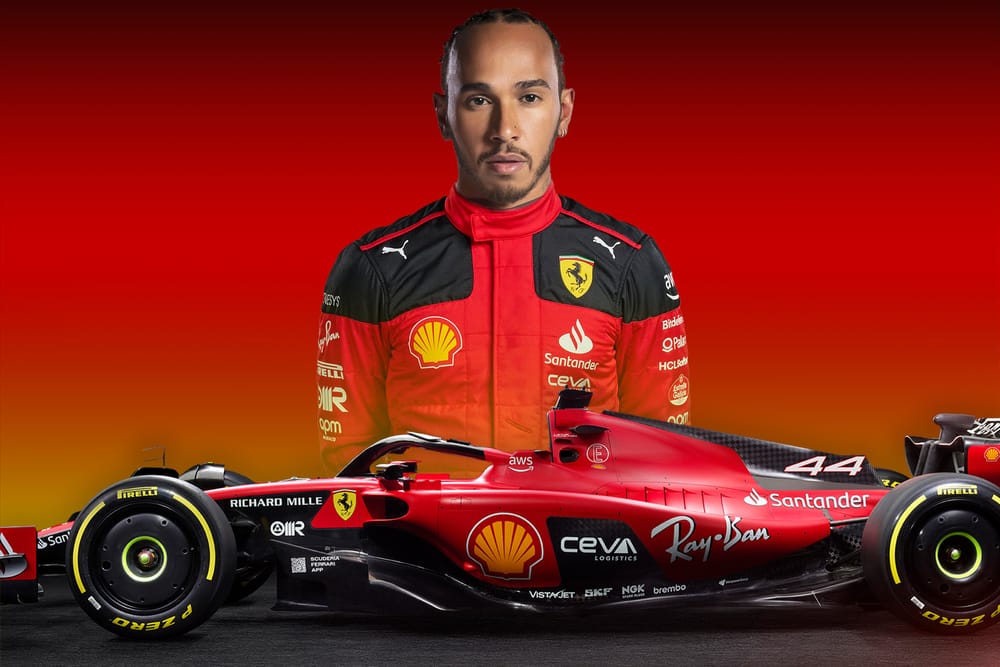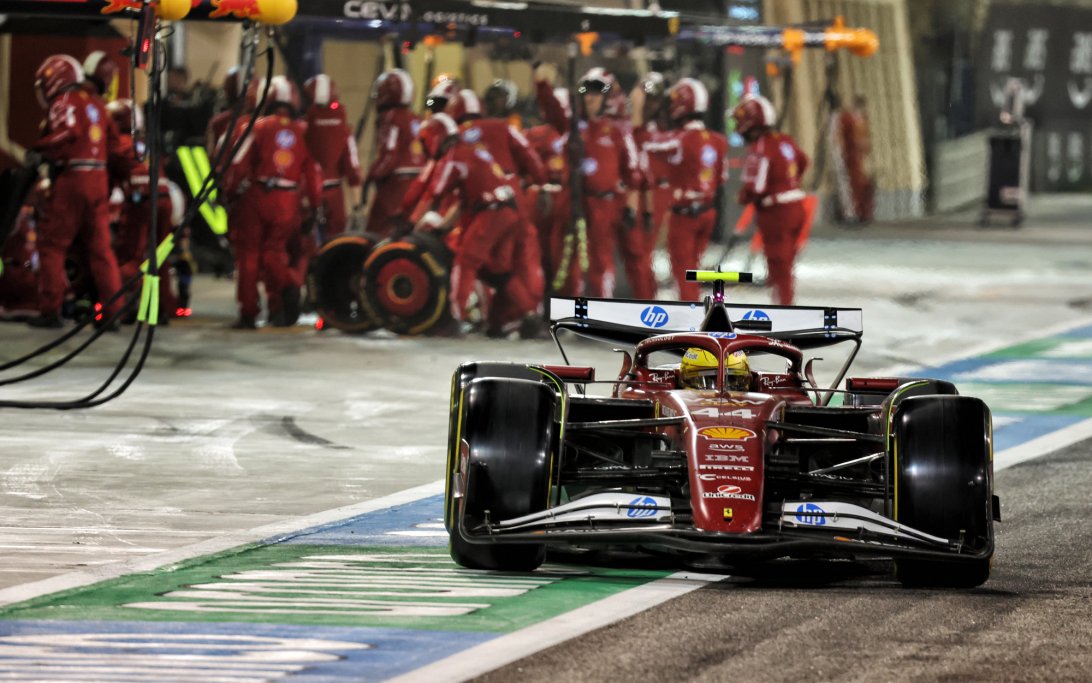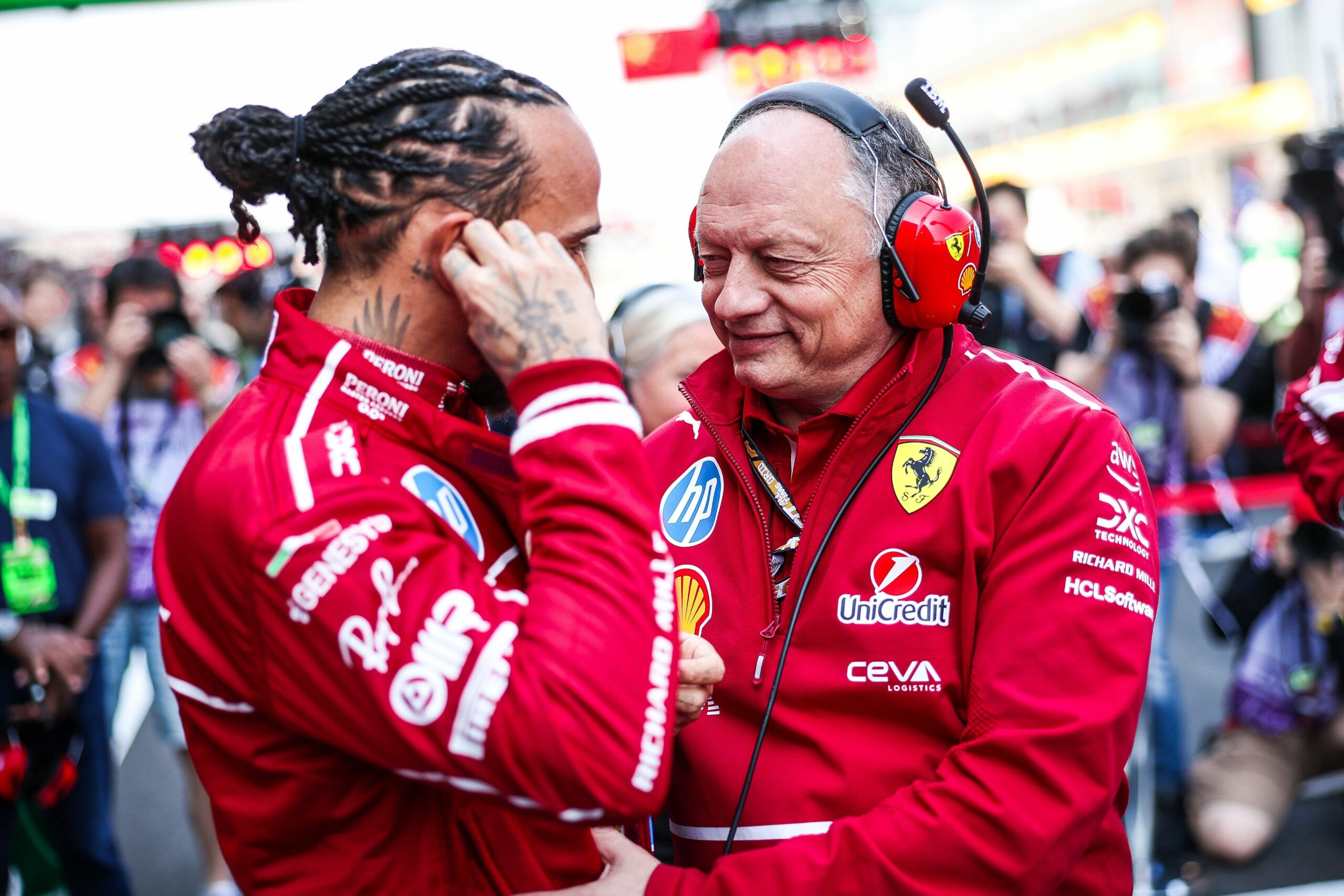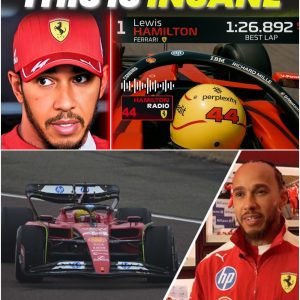In Formula 1, where milliseconds dictate legacies and control is an art form, few drivers have wielded precision as fiercely and flawlessly as Lewis Hamilton.
Over seven world championships, Hamilton has not only conquered rivals but mastered the bond between man and machine—turning instinct into lap time, translating feel into finesse. But Spa-Francorchamps, a cathedral of speed and consequence, offered him not another chapter of dominance, but a rare, raw moment of unraveling.
It didn’t arrive with drama. There was no crash, no fireball, no dramatic radio outburst. Just silence. A still Ferrari. And a driver stranded in the runoff, looking more philosopher than racer.
Hamilton’s spin at Spa wasn’t just a racing incident—it was a crack in the architecture of trust. And in a sport where belief in your machine is the lifeline, that crack was seismic.

A Legend Meets Chaos
Spa has always had a mythic presence in Formula 1. Its long straights and terrifying corners test the edge of bravery and understanding. It doesn’t just challenge drivers—it exposes them. And this time, it wasn’t another competitor that forced Hamilton into a mistake. It was his own car. Or rather, the betrayal of a car that wouldn’t let him be great.
What unfolded in qualifying wasn’t an error. It was the collision between expectation and limitation. Between a driver’s faith and a machine’s rebellion.
At the heart of it was Ferrari’s SF25, a car already under the microscope after disqualification in China for excessive skid plank wear. The team, desperate for stability, raised the ride height to avoid another penalty. But what they gained in legality, they lost in feel. The car’s rear end, unstable and unpredictable, transformed precision driving into guesswork.
Hamilton, known for his harmony with the car’s balance, was suddenly at odds with it.
Upgrades in the Unknown
To combat the instability, Ferrari introduced a new rear suspension at Spa. But with the sprint weekend format compressing preparation into a single practice session, the gamble was massive. The team had no significant data—only brief laps from a filming day, under restrictions that prohibited proper testing.
It was a live experiment, and Hamilton was the test subject.
On his first qualifying run, the signs were already there. A twitch into Stavolo, a correction mid-corner, and a lap compromised. On the second attempt, urgency crept into his approach, and with it, risk. Into the Bus Stop chicane, a late brake, a rear lockup, and then—silence. The car pirouetted into the runoff, stationary and unforgiving. The screen blinked back his fate: P18. The champion would start from the back.
The car hadn’t just lost grip. It had lost trust.

Behind the Silence
Afterwards, there was no outburst. Hamilton’s replies were clipped and cold. “I spun,” he said. Then, “Not great.” But the tone—quiet, heavy—said more than words could. When asked if it was a rear lockup, his nod came with an even heavier revelation: “First time in my career.”
A man who has navigated monsoons in Suzuka and triumphed in chaos at Hockenheim had just experienced something unfamiliar—not in result, but in feeling. A machine that should have been an extension of him had betrayed its purpose.
It wasn’t just mechanical. It was emotional.
The Technical Dilemma
Analysts were quick to dig into the spin. Martin Brundle heard a metallic thud, something unnatural in the behavior of the car. Anthony Davidson speculated about gearbox backlash—an internal disagreement between torque delivery and traction.
But the data could only go so far. Telemetry showed when the rear stepped out. It didn’t explain why. That’s the realm of the driver—where feel overrides numbers, and milliseconds of imbalance become instinctive reactions.
Other drivers also reported the same ghost in the machine—rear-end instability that couldn’t be charted, only felt. In trying to fix one flaw, Ferrari may have unearthed another. And in doing so, they undermined the very foundation of performance: confidence.

A Tale of Two Garages
Adding insult to injury was the view from the other side of the Ferrari garage. Charles Leclerc, unencumbered by the same handling issues, lined up on the second row. The contrast was stark—and cruel. While Leclerc prepared to fight at the front, Hamilton was tasked with survival.
The emotional toll of such a swing isn’t quantifiable. But it’s deeply felt.
Momentum, already fragile, has now stalled. Ferrari came to Spa hoping for a reset. Instead, they exposed deeper structural issues—compromised geometry, unproven parts, and a philosophy that may be too reactive for the sport’s relentless pace.
A Champion in Reflection
But this isn’t the first time Hamilton has faced adversity. His career has been forged in setbacks. What Spa presented wasn’t an ending—it was an ignition. The kind of moment that sharpens resolve.
Because frustration, for Hamilton, doesn’t fester. It fuels.
He didn’t call out the team. He didn’t deflect blame. He absorbed the moment, carried it with grace and poise. That silence, that unspoken fury—it’s what precedes his most iconic rebounds.
What Comes Next?
As Ferrari look toward the Grand Prix, the question isn’t just whether the car can be improved. It’s whether they’ll have the courage to pivot. To accept that their upgrades didn’t work, that perhaps their approach is fundamentally flawed.
For Hamilton, it’s simpler. There’s no need for reinvention—just reconnection. With the car, with the rhythm, with the trust that has carried him to greatness before.
Because in Formula 1, glory isn’t born from perfection. It’s born from recovery.
Final Thoughts
Spa didn’t just spin Hamilton out—it opened a window into the fragile ecosystem of Formula 1. Where a millimeter of setup change can cost a second, where a champion can become a passenger, and where silence speaks louder than strategy.
“I spun,” he said.
“I’m massively frustrated.”
Two phrases. No drama. No excuses.
Just the quiet fury of a legend plotting his return.
Full Video:





